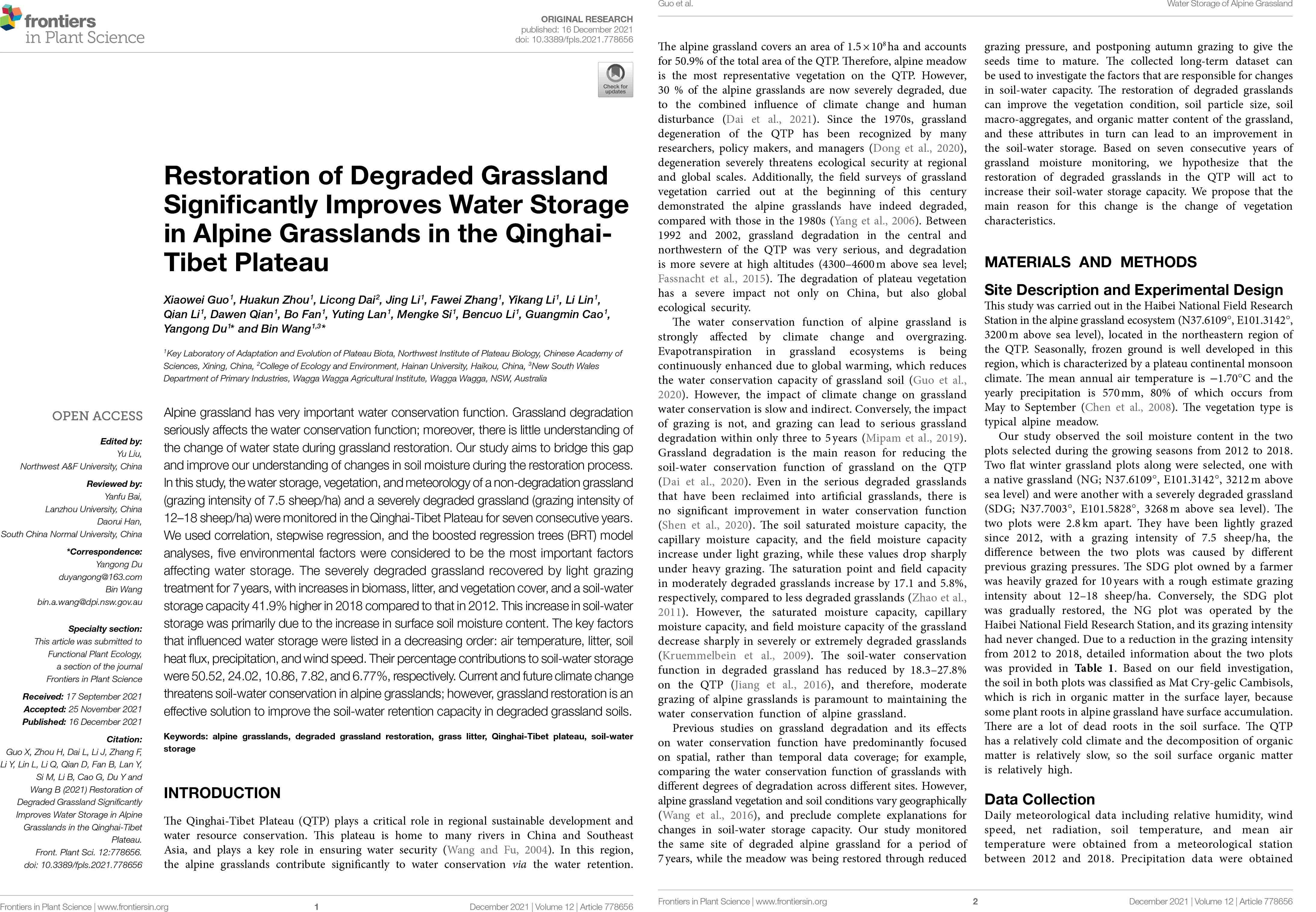Restoration of Degraded Grassland Significantly Improves Water Storage in Alpine Grasslands in the Qinghai-Tibet Plateau
Author:Xiaowei Guo, Huakun Zhou, Licong Dai, Jing Li, Fawei Zhang, Yikang Li, Li Lin, Qian Li, Dawen Qian, Bo Fan, Yuting Lan, Mengke Si, Bencuo Li, Guangmin Cao, Yangong Du and Bin Wang
Abstract:Alpine grassland has very important water conservation function. Grassland degradation seriously affects the water conservation function; moreover, there is little understanding of the change of water state during grassland restoration. Our study aims to bridge this gap and improve our understanding of changes in soil moisture during the restoration process. In this study, the water storage, vegetation, and meteorology of a non-degradation grassland (grazing intensity of 7.5 sheep/ha) and a severely degraded grassland (grazing intensity of 12–18 sheep/ha) were monitored in the Qinghai-Tibet Plateau for seven consecutive years. We used correlation, stepwise regression, and the boosted regression trees (BRT) model analyses, five environmental factors were considered to be the most important factors affecting water storage. The severely degraded grassland recovered by light grazing treatment for 7?years, with increases in biomass, litter, and vegetation cover, and a soil-water storage capacity 41.9% higher in 2018 compared to that in 2012. This increase in soil-water storage was primarily due to the increase in surface soil moisture content. The key factors that influenced water storage were listed in a decreasing order: air temperature, litter, soil heat flux, precipitation, and wind speed. Their percentage contributions to soil-water storage were 50.52, 24.02, 10.86, 7.82, and 6.77%, respectively. Current and future climate change threatens soil-water conservation in alpine grasslands; however, grassland restoration is an effective solution to improve the soil-water retention capacity in degraded grassland soils.




 青公网安备 63010402000197号
青公网安备 63010402000197号